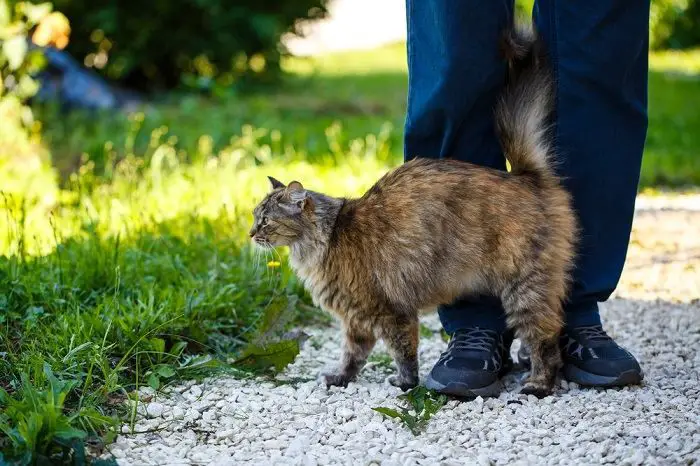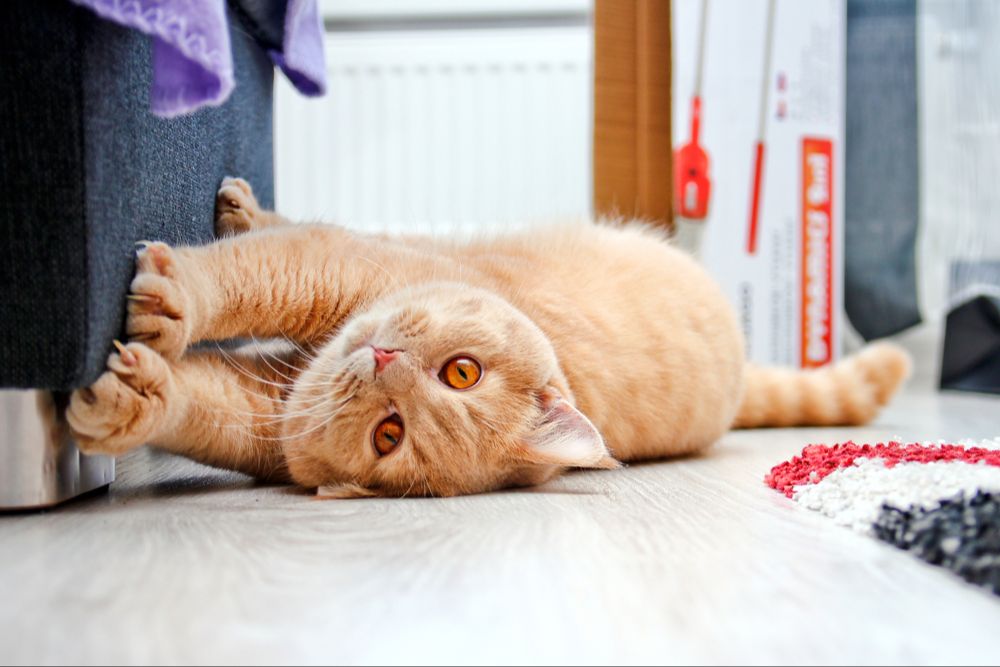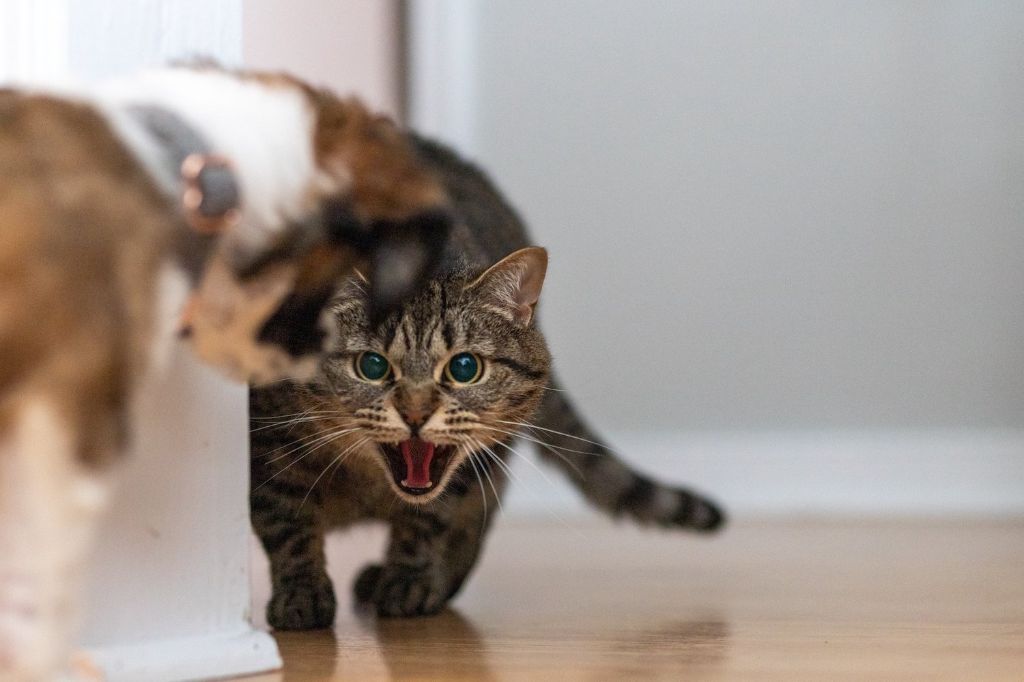Cats are territorial animals who claim specific areas as their own. In the wild, a cat’s territory consists of its home range for hunting and finding mates. For domestic cats, their territory often centers around the home, including yards, patios, and other familiar spaces. Cats mark and defend these territories through various behaviors like rubbing, scratching, and spraying. A cat’s territory provides security, resources, and social interactions. Understanding how cats establish territories reveals important insights into feline nature and why certain spaces hold significance for them.
This overview will examine the methods cats use to construct their territories at home. By outlining how cats rely on scent, visual cues, scratching, and more to claim areas, we gain a deeper appreciation of their innate need for defined spaces to call their own. Exploring why cats value territories also sheds light on how we can harmoniously share our living spaces.
Scent Marking
Cats have a strong sense of smell and use scent glands to mark territory. They have scent glands on their cheeks, forehead, paws, and around the mouth. When a cat rubs against people or objects, it is leaving its scent behind. Cats also mark territory by spraying, scratching, and bunting or headbutting.

Spraying is when cats back up to a vertical surface like a wall and release a stream of urine. This leaves both a visual and scent marker. Scratching leaves both a visual mark and a scent mark from the paw pads. Cats have scent glands between their toes. When they scratch, they release pheromones. Bunting or headbutting deposits scent from glands on the head.
These scent marking behaviors allow cats to claim their territory and let other cats know who lives there. It also signals when a cat is ready to mate. The scents provide cats with information about other cats in their vicinity.
Sources:
https://thecatguru.net/feline-senses-unveiled-how-cats-see-hear-smell-and-taste/
https://blog.catbandit.com/exploring-the-reasons-why-cats-lick-photos/
Visual Markers
Cats use various forms of visual communication to mark their territory and send messages to other cats. Some key visual markers cats use include staring, piloerection (raised fur), and holding their tail straight up.
Intense staring is a common visual signal used by cats staking their claim on an area. A long, fixed stare is a non-verbal way for a cat to say “This is my territory.” Direct eye contact and unwavering focus on another cat establishes dominance and conveys a willingness to defend their turf [1].
Piloerection, or raised fur along the back and tail, is another visual cue cats use to mark territory. Also called Halloween cat, this behavior makes a cat appear larger and more threatening. It sends the message for other cats to “back off” from the claimed area [2].
Holding the tail straight up signals occupancy of a space. An upright tail acts as a beacon, with the cat’s body language communicating “I live here.” Other cats see the upright tail and know this area is currently in use or claimed [1].
Clawing

Cats have an instinctual need to scratch objects in order to mark their territory and sharpen their claws. Scratching allows cats to leave both visual and scent markers. When a cat scratches an object, the scent glands in their paws release pheromones onto the surface. These pheromones signal to other cats that this area belongs to that specific cat (https://vcahospitals.com/know-your-pet/scratching-behavior-in-cats). Since these pheromones indicate “home,” when a cat smells them, they feel more comfortable, relaxed, and secure in their private territory (https://lagrangevethospital.com/scratching-that-itch-why-scratching-is-so-important-for-cats/).
Scratching also helps cats remove the outer layer of their claws to expose a sharper claw underneath. Scratching posts and other acceptable scratching surfaces provide an appropriate place for cats to satisfy this natural scratching urge. Cats often prefer vertical scratching posts since they allow for a full body stretch. Posts with a rough texture that shreds off claw sheaths are ideal. Providing suitable scratching posts is important to preserve furniture and prevent destructive scratching around the home.
Rubbing
Cats have scent glands all over their bodies, including on their face, tail, and paw pads. When a cat rubs against objects like furniture or walls, it is depositing pheromones from these glands onto the surfaces to mark its territory. These pheromones communicate information about the cat to other cats in the area.
One important pheromone is the facial pheromone F3, produced from the cat’s cheeks and forehead. When a cat rubs its head against an object, it deposits this pheromone. The F3 pheromone has a calming and reassuring effect, signaling that the object is part of the cat’s familiar territory 1.
Cats also have pheromone-releasing glands around their tail area. When a cat rubs up against a person’s legs, it is engaging in scent marking and claiming that person as belonging to its group or territory. This can have a calming effect on the cat.
Spraying

Cats mark territory using urine as a visual and olfactory signpost (https://www.mediastorehouse.com/fine-art-storehouse/photo-libraries/dorling-kindersley-prints/illustration-cartoon-cat-spraying-territory-13542237.html). Male cats in particular spray urine on vertical surfaces like walls, furniture, and foliage as a way to mark their domain and let other cats know to stay away. The urine contains pheromones that communicate information about the cat to others. Spraying is seen more often in male cats who have not been neutered, as the behavior is driven by hormones related to mating instincts and establishing dominance. Neutering reduces testosterone levels and usually stops or significantly decreases spraying behavior in male cats.
Range Size
Male cats generally have larger home ranges than female cats. A male cat’s territory can be quite expansive, covering 4 square kilometers or more. Female cats tend to have much smaller ranges of 0.1-0.6 square kilometers. These ranges can vary greatly, however, depending on the environment.
In rural areas, male cats may roam territories of over 6 square kilometers as they have more open space and fewer competitors. Urban male cats often have ranges under 1 square kilometer since they face more territorial pressure from other tomcats. Female urban cats have typical ranges of just 0.05-0.3 square kilometers.
The availability of food and shelter also impacts range size. Cats with consistent food sources from humans will roam smaller areas. And in environments with limited cover or resources, cats must traverse larger territories to meet their needs.
While male ranges are always larger, the degree of range difference between the sexes varies by habitat. In open rural areas, ranges can differ 10-fold. But in crowded cities, male ranges may only be 2-3 times bigger than females.
Defending Territory
Cats are very territorial animals and will defend their territory aggressively from other cats. Male cats in particular are prone to territorial disputes. Cats have several ways of defending their territory from other cats:
Hissing – Cats will hiss loudly at intruding cats as a warning to back off. The hissing sound mimics the noise of an angry snake which can scare away intruders.
Swatting – Cats will aggressively swat with their paws when another cat encroaches on their territory. Their claws are usually out during swatting which can scratch the intruder.
Fighting – Territorial disputes between cats often escalate to physical fighting with loud yowling and serious biting and scratching occurring until one backs down. Cats will stand sideways with fur on end during fights in order to seem larger.
Chasing – After hissing, swatting or fighting an intruding cat, the territorial cat will often chase it out of their territory at full speed.
Cats show these aggressive territorial behaviors not only against strange outdoor cats, but also new cats introduced into a household. Proper cat-to-cat introductions are important to avoid fighting and injury over disputed territory.
Coexisting

Indoor cats who don’t get along can peacefully coexist if their owner provides separate spaces and resources for each cat. This is important because cats are territorial animals who feel more secure when they have their own defined indoor territory. Creating vertical territory using cat trees, shelves, and perches allows cats to occupy different levels and minimize confrontation. Each cat should have their own food and water bowls, litter boxes, scratching posts, beds, and toys. These resources should be placed in separate areas that are “owned” by each cat. Using pheromone diffusers like Feliway can help reduce tension between cats sharing territory. It’s also recommended to give cats who don’t get along separate playtime and affection from the owner. With time, patience, and plenty of territory, most cats can learn to coexist harmoniously indoors.
As discussed in “Easy Steps to Help Your Cats Get Along” from Comfort Zone, providing separate territory and resources is key for cats struggling to get along: https://www.comfortzone.com/behavior-blog/multi-cat-tension/intercat-aggression
Conclusion
This article has explored the various ways cats establish and defend territories in a home. By leaving visual markers, spreading their scents, clawing, rubbing, and spraying, cats communicate their presence and claim areas as their own. Understanding a cat’s territorial behaviors and range size needs is key to providing them a sense of security and minimizing conflicts. Allowing cats to create stable territories, while also providing plenty of vertical space and enrichment, enables harmonious cohabitation.
Cats are innately driven to establish territories, but their behaviors can sometimes be misunderstood. By learning about how cats use scent, visual cues, and physical markings to claim areas, cat owners can gain appreciation for this important feline need. A cat feeling secure in its territory is a cat that is confident, content, and less likely to exhibit problem behaviors. Providing a cat access to preferred spaces, while also respecting their boundaries, allows for a mutually enriching human-feline relationship.

